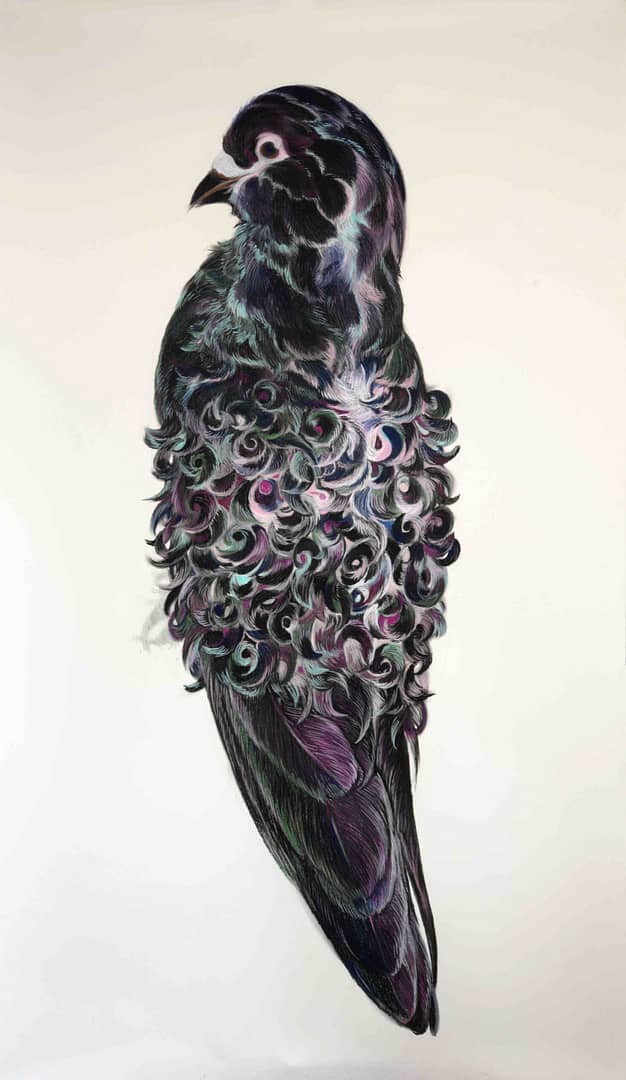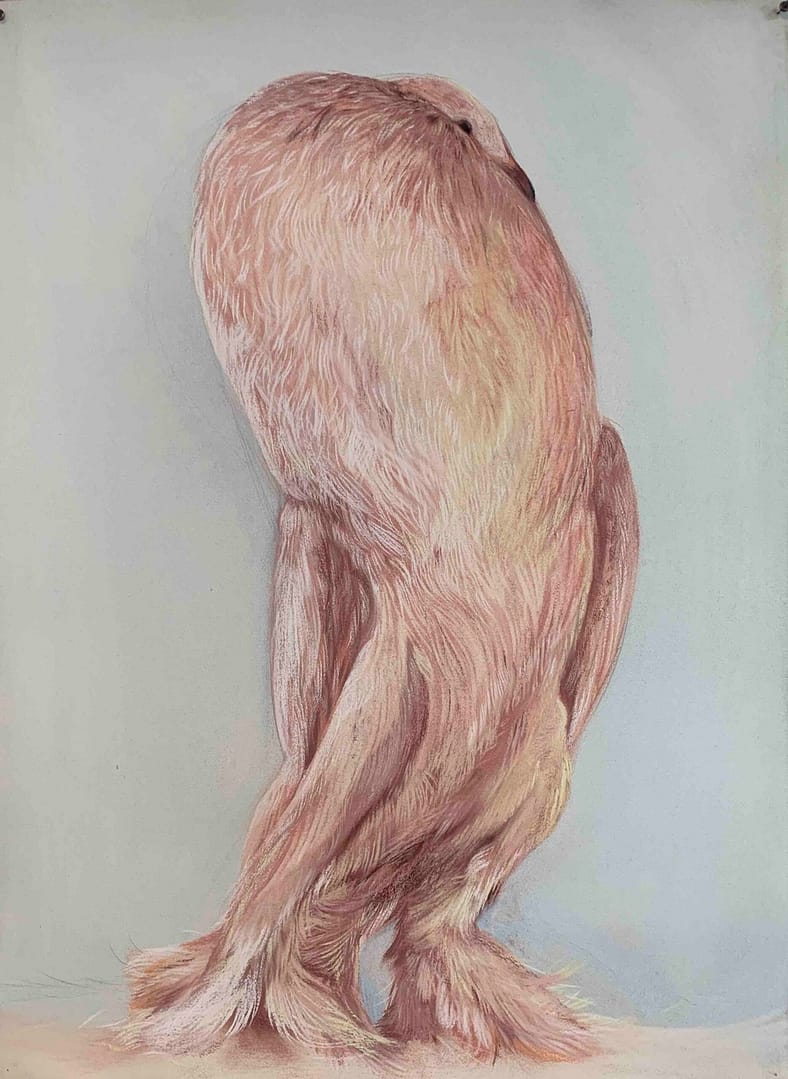Artists
Roos Holleman
Roos Hollemans ( 1989, Tilburg) work focuses on the skin of things. She is interested in how playing with the tangibility and scale of a subject’s form and colours can affect our perception and our feeling for the thing. She often take her subjects from nature and places of natural history, including the internet. In her practice, recurring themes are the malleability and covetousness of the natural and material world—particularly as confrontations of our own mortality and cravings for beauty.
Roos Holleman has been working predominantly with large scale soft pastel drawing in ways that try to emulate a sensorial experience that is not always satisfied with only seeing when we find ourselves in the presence of art and nature. What, for example, does it feel like to lose yourself in the fluff of a bird?
The paintings and drawings of the Dutch baroque have deeply influenced her as an artist, especially the still lifes in which the painter’s scientific and worldly curiosity feels very tangible. The suspension of time, motifs of mortality and abundance, and the physicality in these works are things she has been trying to grasp within her own practice. It is a way to cope with fleetingness of life and with her own desires and losses.
Birds are very often visited in her work, mostly as the study skins found in the depots of natural history museums. Unlike the plumage of living birds, bird skins are not meant to be admired—let alone displayed—but to be studied behind the scenes. Their appearance is rigid and compactly folded with their bodies quite literally shaped by human hands into bundles of fading colour. This human intervention of the bird and its disheveled beauty is what attracts her to bird skins as a subject. They embody the complex relationship we have with nature in a very intimate way to her. When drawing these dead birds among other things, she focus on their anthropomorphic features. Together with a play on scale and texture she tries to create a bond between the onlooker and the work.
The lives of other beings are abstract to us, even as modern understanding draws our predicaments closer together. In Troublesome Fancies that abstraction is emphasised by the exaggerated shapes the subjects are folded and moulded into by our hand. She tried to carry those abstractions through in these works. Fancy pigeons, taxidermy fashion, flowing fox furs and fallen tulip petals can feel as soft and tangible as they can stir us with feelings of uneasiness. One can view Troublesome Fancies as an eclectic study in how emphatic proximity, abstraction, tangibility and scale each play a part in determining our affections towards a perceived subject of natural origin.
In Troublesome Fancies Roos Holleman revisit the bird motif in the strange and plentiful shapes of the domestic bred fancy pigeons. Inspiration for this body of work came to her from dancing anthropomorphic technicolor organisms in Disney’s Fantasia, via countryside lanes with their feathery green groves in her favourite British paintings and in Jane Austen prose. It is by no means a coincidence that the most nonessential hobbies and objects that deal with the manipulating and collecting of nature’s beauty should be so closely associated with the most affluent among us.
BLACK FRILL
Size: 220 x 130 cm
soft pastel on paper
SAXON
Size: 108 x 78 cm
soft pastel on paper
PETAL 4
Size: 78 x 54 cm
soft pastel on pape
FANTAIL
Size: 108 x 78 cm
soft pastel on paper
TREACY
Size: 108 x 78 cm
soft pastel on paper
PETAL 6
Size: 78 x 54 cm
soft pastel on pape
PETAL 3
Size: 78 x 54 cm
soft pastel on paper
MELENCOLIA
Size: 102 x 152 cm
soft pastel on paper










